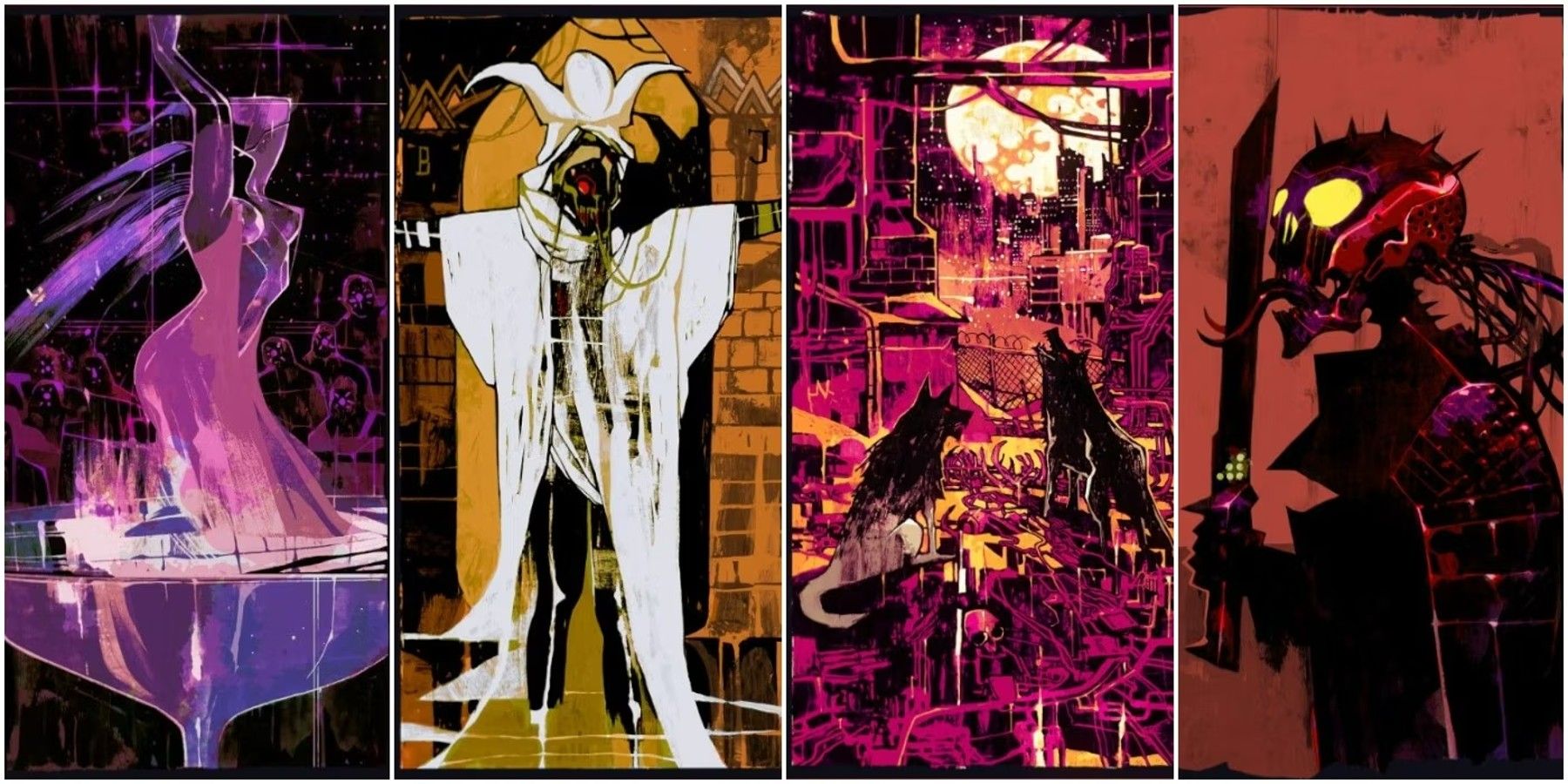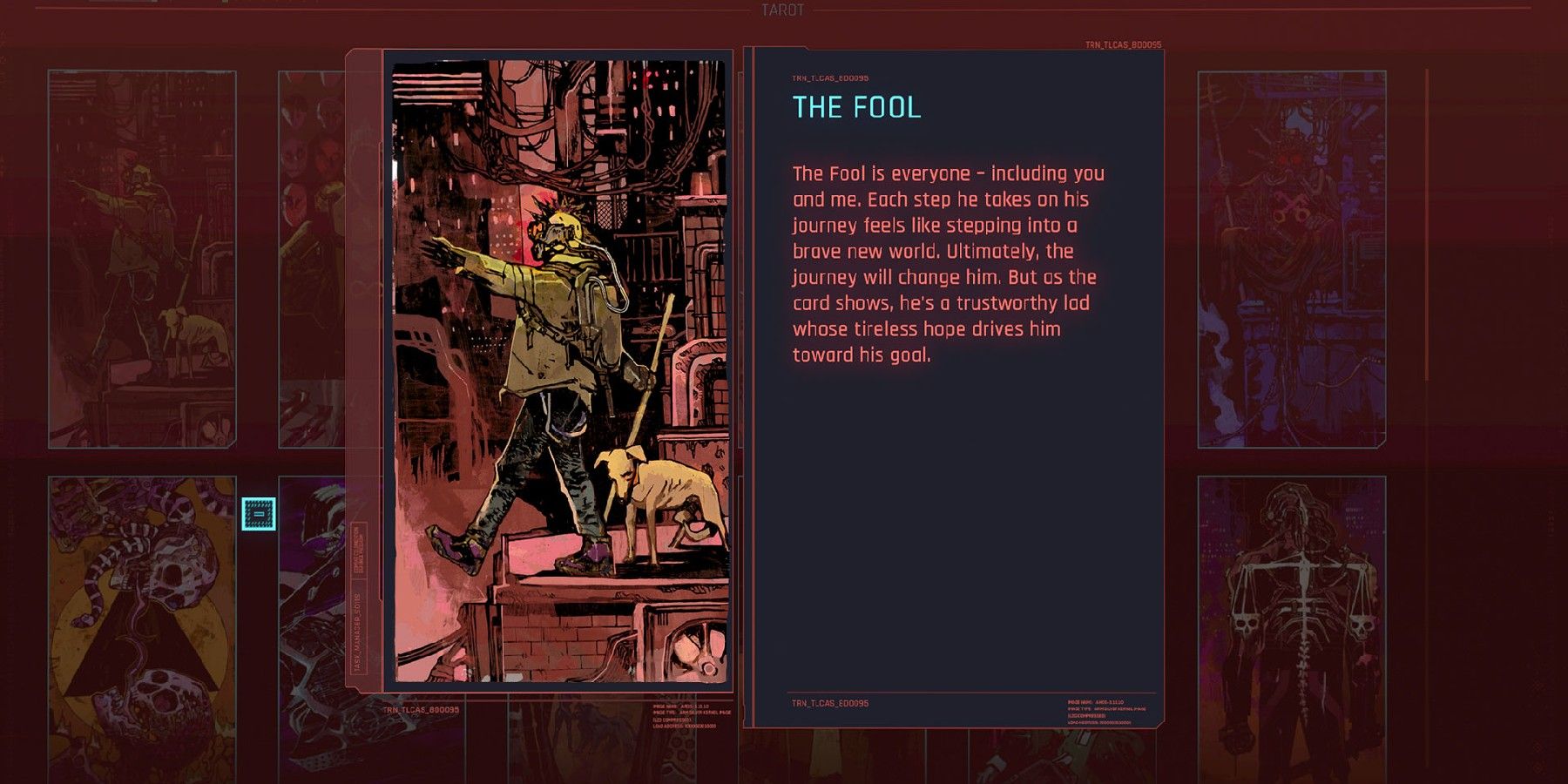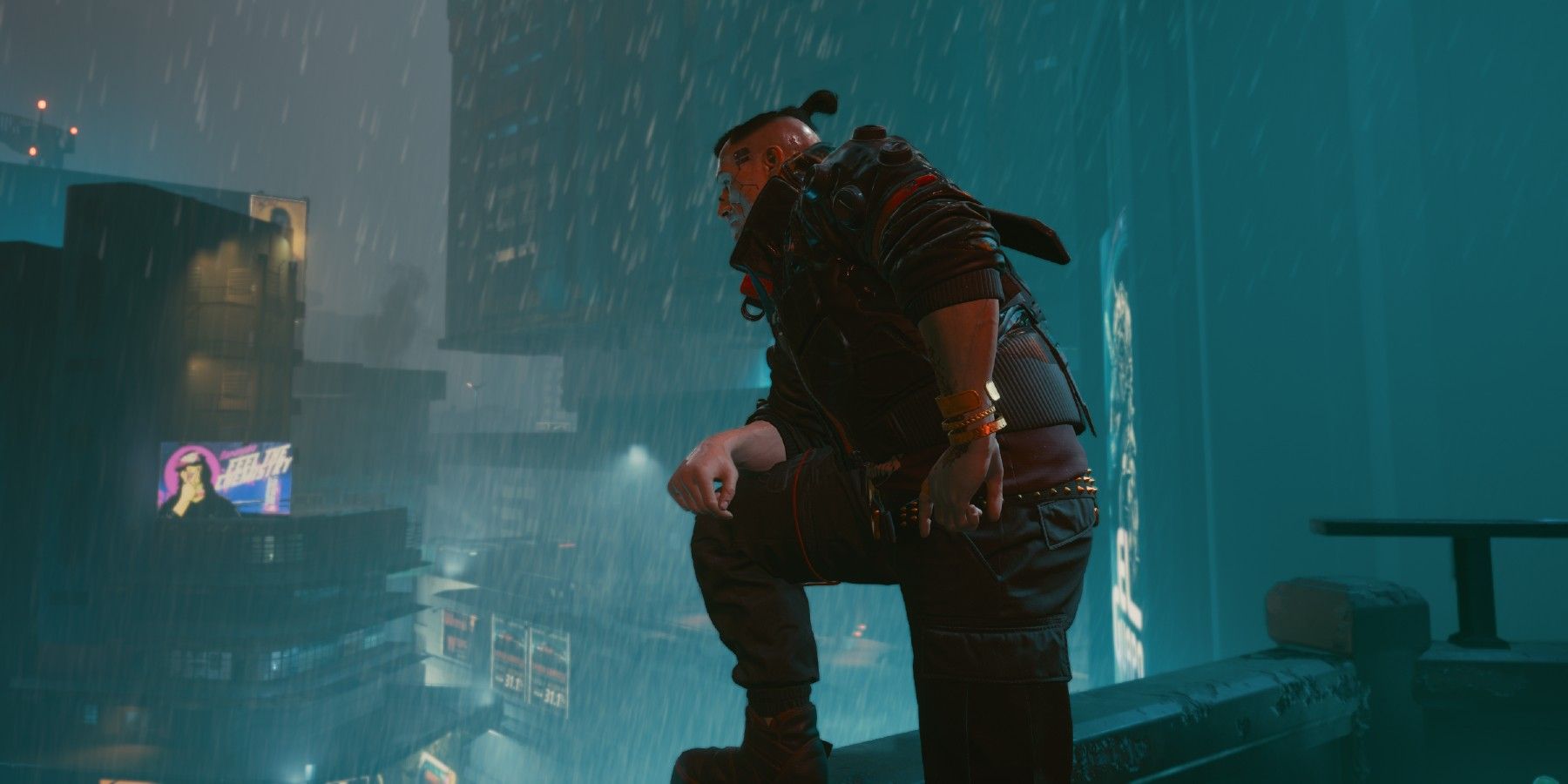Despite its many controversies and criticisms, CD Projekt Red's Cyberpunk 2077 is a memorable game. The combat is fun and frenetic, the characters that the player meets along their journey are a diverse crew of unique personalities, and the gameplay has plenty of interesting elements to get gamers engaged. But one of the best parts of the Cyberpunk 2077 experience is its thriving, multifaceted main location – Night City.
As the beating heart of the game, Night City needed to be original and attention-grabbing, and the sci-fi RPG's setting certainly ticks those boxes. It's basically another character in itself, with its warring gangs, stratified social structures, rampant crime, and neon-lit streets full of secrets. One aspect of Night City that may not appear to figure much in the main story at first is the Tarot cards that players can collect around the map. These intriguing bits of graffiti might just look like gorgeous street art, but they actually have more connections to the narrative than players might think.
Cyberpunk 2077's Tarot Cards
Once V has had their mind-altering encounter with Johnny Silverhand and the anarchist rocker takes up residence in their brain, they will be able to start collecting the various pieces of Tarot-themed wall art that have appeared across the city and in the Badlands. These cards follow the archetypes of the Major Arcana – 22 cards in a traditional 78 card deck that can be considered the "trump" cards. The design of these cards is based on the influential imagery of the Smith-Waite deck created at the start of the twentieth century, with each card having its own prescribed meaning and significance.
While players can encounter these cards largely in any order as they explore the vast areas of Cyberpunk 2077, only 20 of the cards can be found organically in the game. The last two, the Devil and Judgement, can be found in the various endings of the game and are mutually exclusive due to the choices that players will need to make. Each card reveals something about the overall story and holds a special significance for where it is found, using the symbol-packed imagery and links to the cards' original meanings to add layers of esoteric depth to Cyberpunk 2077.
How They Relate To The Story
Whatever order players encounter the Tarot cards, they will still have significance within the story because of their locations and relevance in V's life. One of the first that players will probably encounter is on the wall outside V's apartment, and this is The Fool. This is the perfect way to not only start off the Fool on the Hill sidequest (where gamers need to collect the various Tarot cards), but it is also an apt way to sum up V at the start of the game. The Fool card is about the beginning of a journey, where the traveler is eager and ambitious, but their lack of experience means that they have no idea where the road could take them.
Other cards also have interesting nods to characters or locations and their roles in the story. Another early card that players might encounter is The Magician which can be found on the highway pillars opposite Lizzie's Bar. The braindance club and the headquarters of the Mox gang is a place that gamers will come back to again and again and is where they meet fan-favorite Judy Alvarez. The Magician card represents a confident, adaptable individual who has a variety of tools at their disposal to create anything they want. Given the history of the Mox gang and the legacy of Lizzie's Bar, this feels particularly fitting, and also ties into Judy's braindance expertise.
The Tarot cards spread throughout Night City and the Badlands, as well as the readings that players can do with Misty, help to provide context and additional meaning for characters, locations, and plot points in Cyberpunk 2077. However, the use of Tarot cards to characterize the different endings sums up their importance and how everything V has done has led up to this moment. The Tarot cards associated with each ending can also give a clue as to which are the "bad" ones and the "good" ones, although Tarot cards are much more nuanced than those simple descriptors. The player throwing their lot in with Arasaka grants The Devil achievement – a card that symbolizes temptation and destructive behavior – while The Star is earned by ditching Night City for new pastures, tying in with the card's associations with hope and fresh starts.
Cyberpunk 2077 is available on PC, PS4, PS5, Stadia, Xbox One, and Xbox Series X/S.



